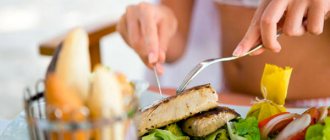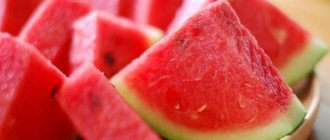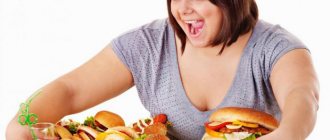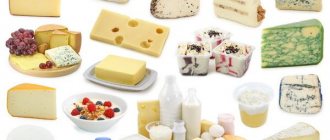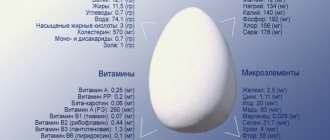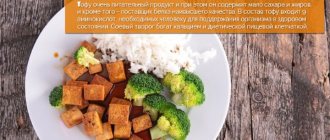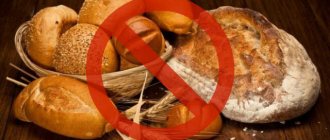It’s enough to type “weight loss diet” into a search engine, and the all-knowing Google will come up with dozens of names. Here you will find a low-carb, low-calorie, protein, keto diet and several dozen more “name” programs that promise weight loss. If you analyze the fashion for diets (and this, no doubt, also exists!), then at different times the pendulum shifts either towards low-calorie or towards protein nutrition systems. Now, some observant nutritionists say, the era of “hunger” diets continues, and many young ladies who want to get rid of fat on their sides perceive protein foods as something excessively high in calories and unworthy of their diet. But what is the reality: is it possible to lose weight on a high-protein diet?
The role of proteins for the body
We are sure that you studied your school biology course with excellent marks and know that proteins are the “building blocks” from which any living organism is built. But besides participating in the construction of cells, tissues, and skeleton, proteins play 2 more important roles:
- participate in the breakdown and absorption of fats, vitamins, microelements and carbohydrates;
- necessary for the functioning of the immune and hormonal systems, and are also involved in the elimination of toxins.
Despite this need for proteins, they are not able to accumulate in the body like fats or carbohydrates. Their only source is food, both animal and plant origin.
If there is a lack of protein in the diet, children’s growth slows down, mental activity weakens, serious (depending on the severity of the protein deficiency - and irreversible) changes in the functioning of internal organs, and a decrease in immunity occur. In adults, the same picture is observed, and in older people, the risk of gout, fractures, kidney failure, liver and gastrointestinal diseases increases.
But a significant “overload” towards protein foods is also fraught with health problems. An excess of protein breakdown products interferes with the normal functioning of the excretory system, enhances putrefactive processes in the intestines, increases nitrogen levels, and in women leads to cycle failure.
Disadvantages and potential harm
In addition to the benefits, it is worth noting the disadvantages of the diet that can come from following the wrong course:
- Failure to comply with the duration of the course and regimen may cause harm to the body (mainly the kidneys and liver);
- Possible weakness and decreased performance in the early stages of the course;
- A large number of contraindications and restrictions;
- Inability to extend the course due to potential health hazards;
- Protein helps flush calcium from the body.

In order to minimize the potential harm of the diet, it is necessary to monitor your health and well-being throughout the course.
In addition, it is important to strictly follow the recommendations offered by the course.
Pros and cons of a protein diet
The main advantage of the diet is rapid weight loss . At the same time, you will not feel a constant feeling of hunger, since protein foods provide the body with the necessary amount of energy for the whole day. But not everything is as good as it seems at first glance. In addition to the advantages, there are also disadvantages.
The main disadvantage of a protein diet is that it cannot be called balanced. With a minimal intake of fats and carbohydrates, the body is deprived of not only nutrients for gaining excess weight, but also vitamins, microelements, and fatty acids.
| Prolonged stay on a protein diet can cause increased fatigue, brittle nails, deterioration of complexion, dry skin, dulling of hair. |
pros:
- protein foods saturate the body for a long time;
- belongs to the category of fast diets;
- varied diet;
- there are no restrictions on the number of calories consumed;
- high efficiency (up to minus 10 kg in 2 weeks);
- the result lasts for a long time.
Minuses:
- refusal of sweets, flour and fatty foods;
- insufficient intake of vitamins and minerals.
The benefits of a protein diet are obvious - six undeniable advantages against two small disadvantages. Despite this, the diet has one significant drawback, due to which you cannot stay on it for more than two weeks.
| A number of studies have found that a high-protein diet with a sedentary lifestyle can be harmful to the body. A long diet leads to swelling of the kidneys, the development of urolithiasis and other unpleasant consequences. |
A number of studies have found that a high-protein diet with a sedentary lifestyle can be harmful to the body. A long diet leads to swelling of the kidneys, the development of urolithiasis and other unpleasant consequences.
To reduce the load on your kidneys, you need to include enough fluids and fiber in the form of vegetables and fruits allowed in your diet.
Nutrition rules
In order for food to bring maximum health benefits, it is necessary to use the correct approach in its preparation :

Under no circumstances should you fry anything. Cooking in a frying pan without oil with a special coating is allowed. But even with this option, foods, especially meat, can release their own fats, which, when heated at high temperatures, form carcinogens.- It is advisable to eat vegetables raw or boil, stew or bake without oil in foil. You can also use your home grill for cooking.
- To give food a special taste, use soy sauce, vinegar of all kinds, salt and pepper.
Protein diet rules
The protein diet is considered one of the less dangerous, the main thing is to stay on it for no more than the recommended period (7-10 days), take breaks, and also follow 3 basic rules :
- Take a complex of vitamins and microelements.
- The number of calories per day should not be less than 1200 - this is the minimum to maintain health.
- Drink enough liquid – at least two liters. Mineral water is best suited for this, as it will restore the mineral balance in the body.
Authorized products:
- poultry meat without skin (chicken, turkey);
- lean fish;
- seafood;
- beef, veal;
- offal (liver, tongue, heart);
- low-fat dairy products (cottage cheese, kefir, milk, unsweetened yogurt, unsweetened curd cheese, tofu cheese);
- egg whites;
- cereals and whole grain bread (4-6 tablespoons of porridge or 1 slice of bread);
- vegetables (cucumbers, tomatoes, celery, all types of cabbage);
- fruits (apples, all citrus fruits);
- drinks (tea and coffee without sugar, mineral water).
Prohibited products:
- any canned food;
- semi-finished products;
- bakery;
- chocolate, marshmallows, candies and other sweets;
- fatty dairy products;
- fruits other than apples and citrus fruits;
- vegetables containing starch, such as potatoes, beans, corn, beans, peas, as well as vegetables high in sugar - carrots, beets;
- During the diet, it is prohibited to drink fruit juices, compotes, sweet carbonated drinks, including those marked “light”;
- sugar and its substitutes (fructose, glucose, sorbitol).
| Food can be steamed, in a slow cooker or baked. Frying in oil, pouring fatty sauces, mayonnaise is prohibited. You can add natural soy sauce, balsamic vinegar, herbs, lemon juice, pepper and salt |
Diet for a protein diet
- Food should be taken 4-6 times a day, with the first meal half an hour after getting up, and the last meal no later than 3 hours before bedtime.
- Until 14.00 in the afternoon, a small portion of complex carbohydrates in the form of 4-6 tbsp is allowed. spoons of boiled buckwheat, oatmeal, brown rice or one slice of whole grain bread.
- From fruits, you can have 1-2 unsweetened apples or citrus fruits in the first half of the day.
- After lunch, protein foods can only be eaten with non-starchy vegetables, such as cucumbers, tomatoes, cabbage, lettuce;
- Fats are allowed up to 30 g per day in the form of 1-2 tbsp. tablespoons of flaxseed oil added to vegetables, while the rest of the food is cooked without oil.
| To avoid a breakdown, once a week you can include in the menu a small portion of your favorite product that is not on the list |
How to prepare dishes on a protein diet
To ensure that the transition to a protein diet does not become an unpleasant shock for you, purchase the permitted sauces and seasonings in advance in order to diversify the menu as much as possible. Any herbs in their pure form without added sugar and salt, wine, apple and balsamic vinegar, natural bouillon cubes, mustard powder or beans, natural soy sauce are suitable.
| Any store-bought sauces and mayonnaise (even lean) are prohibited; instead, salads can be dressed with natural yogurt with the addition of lemon juice, salt and herbs. |
Organic flax chips are ideal for healthy snacking and are made by drying them rather than frying them in oil. Main dishes will have to be steamed, boiled, stewed, baked, or fried in a dry non-stick frying pan. Frying in oil and using a deep fryer is prohibited.
Possible protein sources
Proteins are found in foods of plant and animal origin. Any protein – plant and animal – is easier to digest after heat treatment.
The diet of vegetarians contains only amino acids found in lentils, beans and other legumes. Such compounds have a serious drawback - low digestibility, so they are not as useful as those obtained from animal products.
But animal products contain a lot of fat, and therefore contribute to the deposition of cholesterol on the walls of blood vessels. When choosing protein foods, you should prefer low-fat varieties: lean meat, chicken fillet, low-fat dairy drinks.
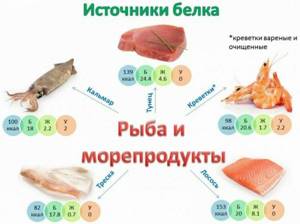
Eggs
You should be careful about products such as eggs. They are exceptionally rich in protein and at the same time they contain a yolk, which consists of a large amount of fat.
If you need to increase the content of highly digestible amino acids in your diet without gaining weight, it is recommended not to eat the yolk. This is what athletes do when they are gaining muscle mass.
Dairy
Dairy products are inferior in protein concentration to meat, but contain calcium. This element is necessary for the body at any age.
Fermented milk products not only supply the body with calcium and amino acids, but also improve intestinal microflora. They can be included in the diet as protein foods, especially low-fat types.
Meat
Poultry, rabbits and cattle are ideal high-protein foods when prepared in any way other than frying.
Pork is a controversial type of meat. It contains a lot of fat. However, if you cut off the fat, the remaining meat will be safe enough to include on the menu. Pork tenderloin contains slightly less protein than beef.
Offal - liver, tongue and other internal organs - contain less protein, but more microelements. People who care about their health should not ignore them. They must be included in the diet as a source of proteins and other nutrients.
Fish
Many amino acids are found in fish and especially in caviar. In addition, they contain enough useful phosphorus.
Caviar from inexpensive varieties of fish, such as capelin, is almost as good as sturgeon in its beneficial properties. It is a cheap source of easily digestible essential amino acids.
Legumes
Peas and beans contain enough protein so that a person who does not engage in sports or heavy physical labor and eats 100-200 g of grains daily does not experience a deficiency. If more amino acids are required, you can include soy isolate in your diet - a specially processed product containing a record percentage of proteins for plant foods - up to 35.
Soy protein isolate is used as sports nutrition. This plant protein is absorbed faster than milk or meat.
Cereals
In this group, the “record holder” for protein content is buckwheat. Cereals are valuable because they are absorbed quite well by the body - 50-60%.
The same amount of protein is contained in oatmeal and pearl barley. Rice, which is often used as a dietary product, is almost three times inferior to buckwheat in protein content.
Fruit
In last place in terms of protein are fruits and vegetables. They cannot be called protein foods, but some contain slightly more amino acids than others.

Protein diet menu options
Each day's menu consists of five meals, including a sufficient amount of protein foods so that the body does not feel hungry. The diet is quite varied, but consists of the simplest and easiest to prepare dishes.
The diet is designed for a week; if you are overweight, the number of days can be increased to 14 days ( 2 weeks is the maximum at which you can be on a protein diet).
Menu No. 1 protein diet for a week (7 days)
Monday, 1 day
Breakfast: 150 g of low-fat cottage cheese, tea or coffee. Snack: 1 apple. Lunch: 150 g boiled chicken breast, 1 slice of whole grain bread. Afternoon snack: 100 g yogurt. Dinner: 200 g steamed fish, vegetable salad.
Tuesday, day 2
Breakfast: 150 g of unsweetened yogurt, tea or coffee. Snack: 1 orange. Lunch: 150 g stewed beef with vegetables. Afternoon snack: a glass of kefir. Dinner: 200 g baked fish, 200 g fresh vegetables.
Wednesday, day 3
Breakfast: 3 egg whites, coffee or tea. Snack: 1 fruit. Lunch: 200 g turkey, 4-6 tbsp. l. brown rice. Afternoon snack: unsweetened curd cheese. Dinner: 150 g boiled beef, 150 g cabbage salad.
Thursday, day 4
Breakfast: a glass of low-fat kefir with 2 oatmeal cookies. Snack: 1 grapefruit. Lunch: 200 g chicken fillet, 200 g asparagus. Afternoon snack: a glass of kefir or fermented baked milk. Dinner: 200 g boiled fish, 150 g vegetables.
Friday, day 5
Breakfast: 150 g of cottage cheese, coffee or tea. Snack: 1 apple. Lunch: 200 g of boiled fish, 1 slice of whole grain bread. Plodnik: 100 g of natural yogurt without sugar. Dinner: 200 g steamed beef, 150 g vegetable salad.
Saturday, 6th day
Breakfast: 2 egg white omelet, tea or coffee. Snack: any citrus fruit. Lunch: stewed beans - 200 g, 150 g of vegetables. Afternoon snack: a glass of kefir. Dinner: 150 g boiled fish, 100 g salad.
Sunday, day 7
Breakfast: 150 g of cottage cheese, tea or coffee. Snack: 1 apple. Lunch: a plate of soup with vegetables, cooked in lean beef broth, 100 g of boiled beef, 1 slice of whole grain bread. Afternoon snack: 1 cottage cheese without sugar. Dinner: 100 g boiled beef, 100 g salad.
Menu No. 2 protein diet for a week
Monday 1 day
Breakfast: brown rice with chicken and vegetables. Snack: large sweet apple. Lunch: vegetable broth with a slice of whole grain bread. Afternoon snack: 250 g of yogurt without sugar. Dinner: turkey stewed with vegetables.
Tuesday day 2
Breakfast: Scrambled eggs with chicken pieces and whole grain toast. Snack: 2 cheesecakes. Lunch: stewed cabbage with turkey. Afternoon snack: a glass of milk. Dinner: 200 g boiled lamb.
Wednesday day 3
Breakfast: natural coffee with skim milk, 150 g of cottage cheese. Snack: 1 large orange. Lunch: meat soup with meatballs, cabbage and cucumber salad. Afternoon snack: 200 g fresh apples. Dinner: baked sea fish.
Thursday day 4
Breakfast: milk buckwheat porridge. Snack: 100 g chopped tomatoes with salt. Lunch: stew with beef, cabbage, tomatoes with onions and spices. Afternoon snack: 2 boiled eggs. Dinner: kefir.
Friday 5th day
Breakfast: 250 g of boiled chicken fillet with mustard sauce, salad with finely chopped cabbage, onion and cucumber. Snack: fruit salad (1 green apple + 1 orange). Lunch: veal baked in a pot, salad with cucumbers and tomatoes. Afternoon snack: cottage cheese soufflé. Dinner: vegetable broth.
Saturday 6th day
Breakfast: buckwheat with omelette, 1 tomato. Snack: 1 glass of apple juice (fresh). Lunch: 250 g vinaigrette, veal steak. Afternoon snack: 2 cheesecakes, half an orange. Dinner: baked fish with herbs.
Sunday 7th day
Breakfast: baked salmon steak, lettuce, cucumber. Snack: 1 orange. Lunch: meat soup with asparagus. Afternoon snack: 4 baked cheesecakes. Dinner: protein salad.
Protein diet menu for 14 days
Monday 1 day
Breakfast: 200 g of stewed beans with beef. Snack: tea, 2 oatmeal cookies. Lunch: fish soup, salad with tomatoes, red onions and cucumbers. Afternoon snack: 100 g Greek yogurt. Dinner: cottage cheese casserole.
Tuesday day 2
Breakfast: boiled chicken liver, buckwheat, Chinese cabbage salad. Snack: 1 apple. Lunch: 200 g of boiled beef, sauerkraut. Afternoon snack: boiled egg, coffee with milk. Dinner: baked chicken on an onion bed.
Wednesday day 3
Breakfast: 2 eggs with whole grain toast, black tea or coffee with milk. Snack: fruit salad (1 apple + 1 orange). Lunch: chicken soup with celery and onions. Afternoon snack: 100 g low-fat kefir, 2 cheesecakes. Dinner: steak with steamed salmon, 1 cucumber.
Thursday day 4
Breakfast: boiled brown rice with chicken salad, cabbage and eggs. Snack: 1 baked apple. Lunch: vegetable broth with 1 slice of whole grain bread. Afternoon snack: 1 glass of milk, 2 oatmeal cookies. Dinner: baked chicken breast, lettuce.
Friday 5th day
Breakfast: black tea, 4 baked cheesecakes. Snack: a glass of orange juice. Lunch: broccoli and turkey soup, 1 egg. Afternoon snack: 100 g of natural yoghurt. Dinner: fish balls, 1 tomato.
Saturday 6th day
Breakfast: buckwheat porridge with meat gravy. Snack: 1 apple. Lunch: 150 g baked beef, vegetable salad, cottage cheese casserole. Afternoon snack: 200 g vinaigrette. Dinner: fish balls, cucumber.
Sunday 7th day
Breakfast: stewed beans, 150 g of beef. Snack: 2 oatmeal cookies, a glass of fresh apple and orange juice. Lunch: vegetable broth, salad with crab sticks, eggs and cucumbers. Afternoon snack: 1 unsweetened cheese. Dinner: 2 cheesecakes, baked apple.
Monday 8th day
Breakfast: boiled rabbit, salad with cucumbers, tomatoes and red onions. Snack: cottage cheese soufflé. Lunch: soup with beef meatballs, 150 g of baked zucchini with herbs. Afternoon snack: 1 apple. Dinner: 100 g boiled beef, 1 cucumber.
Tuesday day 9
Breakfast: brown rice, cottage cheese and egg omelet. Snack: 1 apple. Lunch: soup with fish, egg and poached onion. Afternoon snack: a piece of cheesecake (150 g), green tea. Dinner: baked chicken breast.
Wednesday 10th day
Breakfast: protein salad. Snack: glass of milk, 2 oatmeal cookies. Lunch: meat stew. Afternoon snack: apple. Dinner: cottage cheese, black tea.
Thursday 11th day
Breakfast: stewed mushrooms with low-fat yogurt, 1 apple. Snack: 2 oatmeal cookies with tea. Lunch: stewed cabbage with veal. Afternoon snack: 1 orange. Dinner: steamed fish cutlets.
Friday 12th day
Breakfast: 2 eggs, 1 slice of whole grain bread, tea. Snack: 1 apple. Lunch: buckwheat porridge with stewed turkey and tomatoes. Afternoon snack: 1 glass of milk. Dinner: vegetable broth, 100 g lean lamb.
Saturday 13th day
Breakfast: brown rice, protein salad, black coffee with milk. Snack: 1 glass of fresh apple juice. Lunch: chicken soup, vegetable salad. Afternoon snack: 2 cheesecakes with applesauce. Dinner: boiled cauliflower, omelette.
Sunday 14th day
Breakfast: 2 eggs with whole grain toast, black tea or coffee with milk. Snack: cottage cheese soufflé. Lunch: vegetable stew, steamed turkey. Afternoon snack: low-fat yogurt. Dinner: steamed chicken cutlets.
What products are allowed
All dishes consist of the following ingredients:
- lean parts of any meat;
- fish;
- vegetables without starch;
- unsweetened fruits.
Basil, parsley and dill are added to salads and other dishes.
When consuming the above products, it is necessary to completely exclude alcoholic beverages from the diet. A serving of the dish should weigh no more than two hundred grams. It is advisable to eat food in small portions 5 times a day.
Results and reviews after a protein diet
Projections for weight loss on a protein diet average 3-8 kg in 7-14 days, depending on the initial weight. Everyone loses weight, even people with low physical activity, but the essence of any diet is not so much in rapid weight loss, but in consolidating the result of losing weight.
Here the second side of the coin is revealed - a quick return to the previous diet is fraught with rapid weight gain. This is especially true for those women who, for various reasons, ate monotonous food and perceived the diet as a temporary disaster. “There’s only a week left, I’ll hold out, and then I can go to a cafe with my girlfriends,” such thoughts lead to the fact that a trip to a cafe turns into a crazy “belly celebration.” The restrictions are lifted, there are no limits - and the poor victim of the diet begins to make up for lost time, quickly gaining kilograms.
To avoid such a scenario:
- do not stay on a protein diet for longer than the allowed 14 days;
- diversify your diet as much as possible;
- avoid companies where they will feel sorry for you and try to feed you;
- be sure to include a sufficient amount of permitted fruits and vegetables in your menu;
- get off the diet gradually;
- at least for the first 2 weeks after finishing the protein diet, increase physical activity in order to expend the energy coming from food.
As for reviews about the protein diet, they are both positive and negative. It was not suitable for many - due to a lack of vitamins and microelements, some of those losing weight developed dizziness and weakness. Despite this, every person who went on a protein diet lost weight.
Partially limited products
Sometimes strict adherence to a diet cannot be achieved. This may be due to travel, lack of time to cook, or significant events that involve feasts.
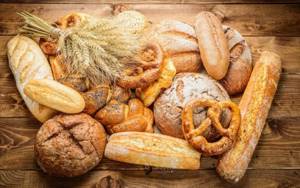
Flour confectionery products are included in the list of partially restricted products
In this case, the following products are allowed:
- sparkling water;
- juice in a package;
- flour, confectionery products;
- compote.
The permissible alcohol limit for women is 25 ml, for men - 50 ml. The permissible amount of salt is 5 grams. It is better to avoid marinades and all kinds of pickles altogether.
Contraindications for a protein diet
There is no need to say that any diet is contraindicated during pregnancy and lactation. In addition, a protein diet is not suitable for older people, since a completely protein diet increases blood clotting, which increases the risk of blood clots in the blood vessels. The diet is also contraindicated for the following diseases:
- renal dysfunction;
- gastrointestinal diseases (colitis, pancreatitis, dysbacteriosis);
- liver diseases;
- problems of the cardiovascular system.
Impact on the body
Following a meat and vegetable diet helps you lose unnecessary weight in a short time.
Additional advantages of this method:
- proteins saturate the body with amino acids;
- fiber supports the functioning of systems and individual organs;
- carbohydrates replenish energy reserves necessary for human life.
By following this method of eating, a person can lose up to ten kg of weight.

A protein-vegetable diet is popular among people of any age.
Protein Diet Options
Many modern diets are based on the principle of protein nutrition. Let's look at the most popular options.
Protein-carbohydrate diet
Its essence is that protein days alternate with carbohydrate days, that is, on one day you eat exclusively protein foods, on the other you eat complex carbohydrates. This diet option is considered more balanced and can be followed for more than two weeks. Typically, this diet is resorted to after a purely protein diet to consolidate the result.
Atkins diet
Also known as the Hollywood diet, it has become a favorite of many Hollywood stars. The basis of the diet compiled by Dr. Atkins is the consumption of predominantly protein foods; even high-calorie fatty foods are allowed, but carbohydrates are excluded.
Protein diet of Dr. Pierre Dukan
The most popular of the protein diets is the Dukan nutrition system. This is precisely the system of proper nutrition that you need to adhere to for the rest of your life.
According to modern nutritionists, the best diet for losing weight will be the one that you can follow comfortably, without suffering from hunger, without falling from weakness and without getting hung up on calorie counting.
What else is protein good for during a diet?
Losing weight is, as they say, only half the battle. In the fight against extra pounds, it is important not to lose health and maintain beauty. In this case, there is no equal to a nutrition system based on the consumption of large amounts of proteins.

Proteins, as already mentioned, preserve muscle mass. And if you do strength training during a protein diet, you can give relief to your abs, arms and legs. If you have to remove a lot of extra pounds, then there is a risk of sagging skin on your arms, legs, and stomach. Protein foods and moderate physical activity will again help prevent this. Some unbalanced diets can make bone tissue brittle and weak. Following a high-protein diet that contains a lot of dairy products eliminates this risk and, conversely, improves the structure of bones and teeth.
Recommendations for following a protein diet
Several important nuances influence the final result and the diet itself.
- Accurate calculation of daily protein intake. The minimum daily protein requirement for an adult is 40 g, the maximum is 120 g. But on average, protein consumption during a diet should be 0.97 - 1.07 g per 1 kg of weight with low physical activity, and 1.2 - 1 .7 g per 1 kg of weight with regular strength training. That is, a woman weighing 55 kg should consume at least 55 g of protein per day. Remember: we are not talking about protein foods, but about pure protein.
- Drink at least 2 liters of water per day. This rule is connected not only with recommendations for proper nutrition. Mineral water is necessary in order to facilitate the functioning of the excretory system, which is already overloaded with protein breakdown products. With a lack of water in the body, the level of ammonia increases, which has a detrimental effect on the pancreas and stomach.
- Taking a vitamin complex . To ensure that the body suffers as little as possible from an unbalanced diet, nutritionists recommend replenishing the required amount of vitamins and minerals in the diet with synthetic vitamin complexes. At the end of the diet, women should also take a course of fish oil to improve the condition of hair, nails and hormonal balance.
- Sports activities . One of the disadvantages of a protein diet is a quick return to previous weight. To maintain and consolidate the results obtained as much as possible, you should go to the gym or at least to a fitness center.
- Presence of fiber in the diet . An abundance of heavy protein foods leads to a deterioration in intestinal motility, which means a sharp increase in the number of putrefactive bacteria. Non-starchy vegetables and store-bought bran will help reduce the load on the gastrointestinal tract and avoid constipation.
The best motivation is the results of those who have already completed the protein diet and were satisfied.
Protein: how much and when to eat to lose weight
Researchers have differing opinions about the daily amount of protein required for effective weight loss. But if we start from the idea that the caloric content of a high-protein diet should consist of more than 35% protein foods, then the following indicators are obtained. With a total calorie diet of 800 kcal/day, you need to eat at least 70 g of protein food. At 1000 kcal/day - 87.5 g, at 1200 kcal - 105 g, at 1500 kcal - 131 g. But these are still, so to speak, “raw” numbers, since the body weight of a person following a high-protein diet is also of great importance. According to the standards calculated for bodybuilders, the daily protein intake should be approximately 2-3 g of nutrient per 1 kg of body weight. In some cases, the protein portion is increased to 3-4 g/1 kg, but in this case the risk of side effects increases significantly, which we will talk about a little later.
One more important note. Following a high-protein diet does not mean that you have to eat a kilogram of fish or meat in one sitting. The human body works in such a way that in one meal it is able to absorb no more than 10-20 g of pure proteins. The rest can be considered thrown away.
Also, for effective fat burning and muscle building, the quality of proteins matters. Most proponents of a high-protein diet advocate animal proteins, since they are almost completely absorbed by our bodies. But at the same time, there is no reason to eat exclusively chicken, meat and fish throughout the diet. Dairy products, eggs, beans, grains, soy, some vegetables, nuts and seeds should also be included in the diet as an alternative source of proteins.
